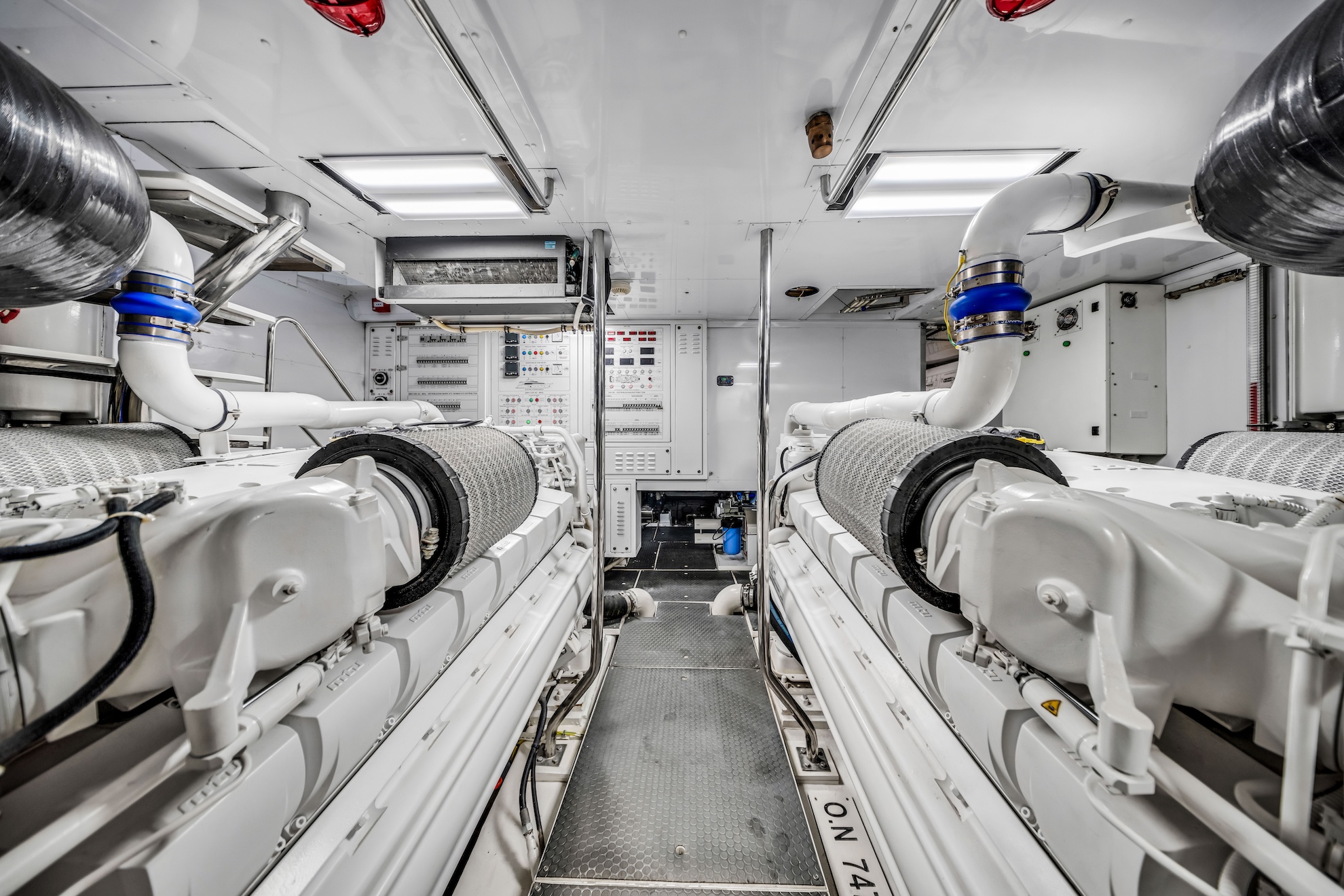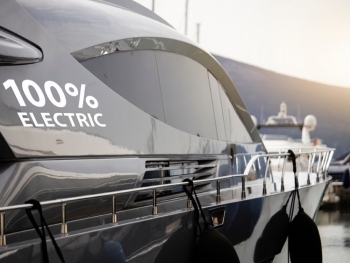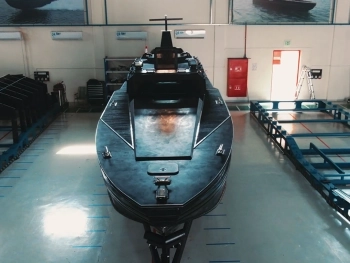Buying a yacht is one of the most exciting - and complex - purchases you’ll ever make.
Whether it’s your first vessel or an upgrade to something larger, a yacht is more than a luxury item: it’s a serious investment that demands careful research, inspection, and documentation.
Too often, buyers focus on aesthetics and overlook the details that determine a yacht’s true value and long-term cost. That’s where this ultimate yacht buying checklist comes in - a complete step-by-step guide to help you make a confident, informed decision before signing the dotted line.
1. Define Your Needs and Budget
Before you start touring yachts or browsing listings, take a step back and define your goals, lifestyle, and budget.
Ask Yourself:
- How do I plan to use the yacht - day cruising, long-range voyages, or chartering?
- How many guests or crew do I need to accommodate?
- What’s my total annual operating budget (maintenance, fuel, insurance, dockage)?
- Am I comfortable with hands-on ownership, or do I prefer full-service management?
Budget Breakdown
As a rule of thumb, annual ownership costs average 7–15% of the yacht’s purchase price.
If you buy a $2 million yacht, expect $140,000–$300,000 in annual expenses for maintenance, crew, and insurance.
💡 Pro Tip: Builders like Perulla design yachts with low-maintenance polyethylene hulls - significantly reducing upkeep costs over time.
2. Choose the Right Type and Size
Your yacht’s size and type should match your cruising plans and experience level.
| Category | Size Range | Best For | Typical Use |
|---|---|---|---|
| Day Cruiser / Sport Yacht | 30–50 ft | Easy handling | Coastal cruising, short trips |
| Motor Cruiser / Catamaran | 45–70 ft | Family comfort | Weekend or liveaboard |
| Explorer / Expedition Yacht | 70–130 ft | Long range | Offshore and global cruising |
| Superyacht | 130+ ft | Luxury lifestyle | Professional crew, charters |
Material Matters: Fiberglass remains popular, but innovative materials like polyethylene (HDPE) - used by Perulla - offer impact resistance, corrosion-proof durability, and near-zero maintenance, making them ideal for long-term investment.
3. Decide: New vs. Pre-Owned
New Yachts
- Customization, latest tech, and warranty coverage
- Higher initial price and longer delivery time
- Lower immediate maintenance
Pre-Owned Yachts
- Better value and immediate availability
- May require refits or upgrades
- Essential to verify history and survey results
Each option can be a smart investment - the key is due diligence.
4. Research the Builder and Brand Reputation
A yacht’s quality depends on its builder’s engineering, materials, and after-sales support.
Evaluate the Builder:
- How long have they been in business?
- Do they offer transparent construction standards?
- Are materials certified (e.g., CE, ISO, RINA, Lloyd’s)?
- What’s their resale reputation?
Builders like Perulla stand out for their innovative approach - crafting yachts with eco-friendly polyethylene hulls that outperform traditional fiberglass in longevity and strength, while remaining lightweight and low-maintenance.
5. Conduct a Professional Marine Survey
Never skip a survey and sea trial - even for new yachts.
A survey is your insurance against hidden issues and can affect financing, insurance, and resale value.
Your Survey Should Include:
- Hull Integrity: Look for delamination, corrosion, or structural weaknesses.
- Engines & Propulsion: Compression tests, oil analysis, vibration check.
- Electrical Systems: Batteries, wiring, and generators.
- Navigation & Electronics: Ensure proper function and software updates.
- Plumbing & Tanks: Check for leaks, contamination, and pump operation.
- Safety Equipment: Verify expiration dates and compliance with maritime standards.
💡 Sea Trial Tip: Perform the trial in varied conditions - not just calm water - to gauge handling, vibration, and noise at different speeds.
6. Verify Documentation and Ownership
Ensure all paperwork is clear and accurate before payment.
Essential Documents:
- Builder’s Certificate (for new yachts) or Bill of Sale (for used yachts)
- Registration and Title proving legal ownership
- VAT / Import Documentation (especially in EU or cross-border sales)
- Maintenance Logs and Service Records
- Warranty Details and transferability
- Survey Report and Insurance Valuation
🚫 Red Flag: Missing paperwork, mismatched hull numbers, or unclear ownership history can delay or invalidate your purchase.
7. Understand Legal, Tax, and Flag Registration
Where and how you register your yacht affects taxes, privacy, and compliance.
Key Considerations:
- Flag State: Determines safety standards, crew rules, and inspection schedules.
- Tax Liability: VAT, import duties, or luxury taxes vary by region.
- Usage Type: Private or charter registration has different obligations.
- Ownership Structure: Many owners register via company entities for protection or charter use.
Consult a maritime attorney or broker experienced in international yacht law before finalizing.
8. Plan Financing and Insurance
Financing Options:
- Marine-specific loans (secured by the vessel)
- Refinance or trade-in programs for existing yachts
- Lease-to-own or fractional ownership models
Insurance Essentials:
- Hull & Machinery coverage
- Third-party liability
- Crew and guest coverage
- Cruising area restrictions
Premiums typically range between 0.7–2% of the yacht’s insured value per year.
9. Inspect After-Sales Support and Maintenance Plans
Your relationship with the builder or dealer continues long after delivery.
Evaluate Their Support:
- Do they offer local or international service networks?
- How easy is it to source parts or perform warranty repairs?
- Are maintenance programs or extended warranties available?
Perulla, for example, builds yachts designed to reduce maintenance dependency - with corrosion-proof hulls, simplified mechanical systems, and durable finishes that minimize long-term costs.
10. Final Negotiation and Payment Protection
Before you sign:
- Agree on a detailed purchase contract outlining payment milestones, delivery dates, and survey contingencies.
- Use an escrow account managed by a yacht broker or maritime lawyer for secure payment.
- Include “subject to survey” and “sea trial approval” clauses before final acceptance.
- Document everything - from equipment lists to software licenses and onboard inventory.
A reputable broker will ensure transparency, fair negotiation, and compliance with all maritime sales standards.
11. Post-Purchase Essentials
Even after signing, a few key steps remain:
- Arrange insurance activation and registration transfer before delivery.
- Schedule crew training or familiarization with systems and safety gear.
- Plan for annual service, docking, and seasonal storage.
- Keep digital and hard copies of all maintenance logs and receipts - essential for resale value.
12. Bonus: 5 Mistakes to Avoid When Buying a Yacht
- Skipping the Survey: Never buy without a professional inspection.
- Underestimating Ownership Costs: Maintenance, crew, and dockage add up fast.
- Ignoring Resale Value: Choose reputable brands and materials that hold value.
- Overlooking Insurance Requirements: Some regions or marinas have strict coverage standards.
- Falling for Looks Over Function: A beautiful yacht that doesn’t fit your lifestyle will cost you enjoyment - and money.
Buying a yacht is both an emotional and financial investment.
By following this checklist - from defining your goals to verifying documentation and performance - you can ensure your purchase is as secure and rewarding as possible.
Whether you choose a brand-new model or a carefully maintained pre-owned yacht, the key is clarity, patience, and precision.
And if long-term value and low maintenance are part of your criteria, consider modern builders like Perulla, whose polyethylene hulls and simplified systems redefine what smart yacht ownership can look like - durable, efficient, and built for a lifetime at sea.
Because in the end, the best yachts aren’t just the ones that impress - they’re the ones that endure.












